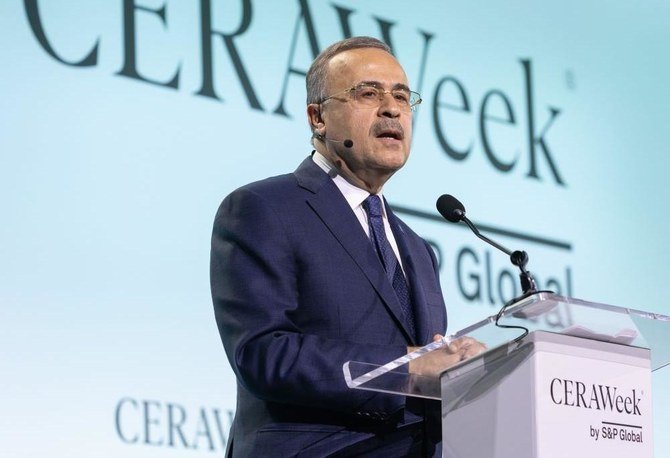CEO of Saudi Aramco’s remarks underscored the complex interplay between evolving energy demands, geopolitical tensions, and environmental imperatives.
Amin H Nasser, the President and CEO of Saudi Aramco, delivered a resounding message to global policymakers and energy industry leaders during his address at the CERAWeek conference in Houston. With the backdrop of soaring oil demand projections, Nasser called for a pragmatic approach to energy transition, emphasizing the indispensable role of oil and gas in meeting the world’s energy needs.
Speaking at the prestigious event, Nasser dismissed the notion of an imminent peak in oil demand, asserting that current trends suggest otherwise.
He projected that global oil demand would hit a staggering 104 million barrels per day (bpd) in 2024, marking a new record. Despite ongoing investments in alternative energy sources, Nasser highlighted the persistent dominance of hydrocarbons in the global energy mix.
“The fantasy of phasing out oil and gas must be abandoned,” declared Nasser, drawing applause from the audience of industry executives. He stressed the necessity of adequate investment in traditional energy sources to align with realistic demand projections. Nasser’s remarks underscored Saudi Aramco’s commitment to sustaining its position as the world’s leading energy company amidst evolving market dynamics.
Nasser pointed to the sustained growth in oil demand, particularly from emerging economies, as a key driver that could prolong the reliance on hydrocarbons well into the future. His long-term outlook contradicted forecasts by some Western energy watchdogs, such as the International Energy Agency (IEA), which had predicted a peak in oil demand by 2030.
Responding to Nasser’s comments on the energy transition, U.S. Secretary of State Jennifer Granholm acknowledged the diversity of perspectives on the issue. Granholm noted contrasting studies suggesting a potential peak in oil and gas demand by 2030, highlighting the ongoing debate within the energy sector.
Amidst discussions on reducing greenhouse gas emissions, Nasser advocated for the adoption of carbon capture and other technologies to mitigate environmental impacts from hydrocarbon consumption. He emphasized the importance of introducing new energy sources only when they are technologically mature and economically competitive.
Nasser also addressed recent disruptions in shipping routes in the Red Sea, attributed to attacks by Yemen’s Houthi group. These incidents have led to delays in oil shipments, prompting rerouting of vessels to avoid the affected areas. Despite these challenges, Nasser assured that Saudi Aramco remained resilient, aided by its strategic infrastructure, including the East-West pipeline.
Highlighting the shifting dynamics in global oil markets, Nasser revealed that Europe had emerged as a significant market for Aramco due to disruptions in Red Sea shipping routes. He reiterated Aramco’s substantial spare capacity of 3 million bpd, reaffirming the company’s readiness to address any unforeseen disruptions in global oil supply.
In conclusion, Nasser’s remarks at the CERAWeek conference underscored the complex interplay between evolving energy demands, geopolitical tensions, and environmental imperatives. As the world grapples with the challenges of energy transition, Saudi Aramco stands poised to navigate the changing landscape while upholding its pivotal role in the global energy sector.
